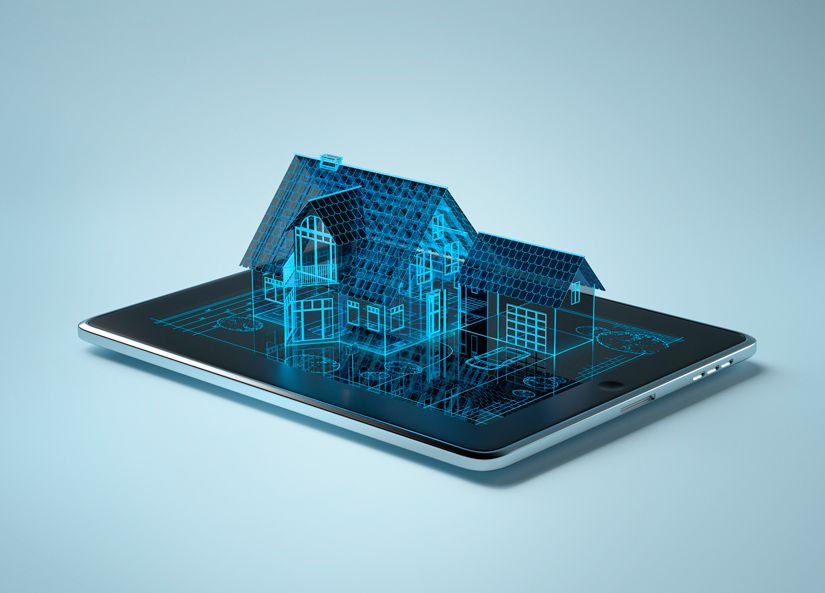
Justin George, Madhushri Banerjee, Professor Brett Martin, 12 January, 2021
During the COVID-19 pandemic, one specific consumer behaviour has been emerging strongly. As global citizens isolated themselves within their homes, they were busy rewiring and improving their homes for maximum convenience. However, is there a downside to this technology in the home?
Australians’ affinity for smart homes
Consumer data platform ComScore Inc. has noted that the use of voice-controlled smart home devices, particularly smart TVs have increased around 27% as compared to March 2019. Now, global smart speaker sales are on track to hit 30% growth in 2020.
Australians enjoy the convenience of home automation and are hyper-personalising to create comfortable and efficient homes. Interestingly, it’s been estimated that the average Aussie household will have 37 devices by 2023, half of which will be connected through the internet of things (IoT).
Valued at $1.7 million in 2019, Statista forecasts that the number of smart homes will reach 45.5% of the total Australian households by 2024. However, this behaviour gives rise to a pressing concern – what data are these devices using and how can Australians ensure their data is not misused?
Smart Homes – a new battleground for Australian consumer data?
In our data-driven economies, detailed lifestyle data is invaluable. Data has always existed since the advent of the world wide web (www) but what has evolved over the years is the way it is captured, stored, sorted, and used. In a way, this data capturing is what makes the internet ‘free’.
“If you are not buying a product on the internet, you are the product”
The ‘freemium model’ drives brands to gain consumer attention, aiding brand visibility and influence consumer choice. Yet a major criticism of this approach is that it encourages ‘surveillance capitalism’, where data from human experiences are used as paid consumer behaviour intelligence. This is a part of a global business intelligence industry that is expected to grow to USD 147 billion by 2025.
Consumer privacy invasion is a negative consequence of this data capturing model. A significant consequence in Western countries was the development of General Data Protection Regulation (GDPR) in the European Union and the California Consumer Privacy Act which were both implemented to assist in protecting consumer data privacy. Google also announced the phasing out of ‘web tracking cookies’, which have been the backbone of sourcing this form of consumer behaviour intelligence.
While the above are positive steps to preserving consumer data privacy, there is a complex transition with brands and marketers seeking new methods of collecting valuable consumer psychometric data.
Are Australian smart home users currently protected?
Did you know that an Alexa owner in Australia is not legally protected by its US-based manufacturer in case of data misappropriation? Also, what can users do if your data and passwords are leaked on an overseas web server and an IoT platform is taking no action to reverse it?
At present, there are no clear guidelines for technology and innovation producers as directed by an authority, such as the US Federal Trade Commission (FTC) on how to protect against consumer data misuse. The body argued that building regulatory frameworks for a nascent industry could interfere with the free market.
However, regulatory frameworks to secure Australian consumers using IoT devices is currently in the works by The Office of the Australian Information Commissioner (OAIC).
How Australians can enjoy smart homes while protecting their data?
Here are some handy hints for smart home technology users on what data you risk giving away in your daily life, and how to prevent it:
- Familiarise yourself with the common risks and their simple solutions, such as advanced smart TV settings which can ensure your connected TV is not tracking your behaviour when using the device. If you find that a smart home app assumes your “consent”, reach out to their developers through an online forum, a tweet or an online product review highlighting your concern.
- Your Internet Service Provider (ISP) is legally required to store ‘metadata’ on you such as your name, date of birth, billing address, IP address, as well as your web browsing history. It may be a good time to consider opting for a trustworthy Virtual Private Network (VPN) to browse the web. This way, your ISP can only see your connection to the VPN, nothing else which can be collected and misappropriated through a data breach.
- Opt for Two Factor Authorisation for your smart home technology to reduce chances of losing access in case of a breach.
- Another sensible, holistic and long-term approach is to consider shifting to privacy-core products in key devices under your control, such as your phone and laptops. Using a search engine like DuckDuckGo which does not track your search history, can significantly reduce the data you share on a regular basis.
Consumers need to demand better built-in privacy features
The world around us may be evolving rapidly but the customer is still king, and knowledge is still power. How can features in your smart home be improved whilst ensuring data privacy? By continuing dialogue between consumers and developers. Collectively, a safer smart home ecosystem can evolve if users vocalise their need for better, transparent, and built-in smart home privacy features.
Go smart, but be safe too!


